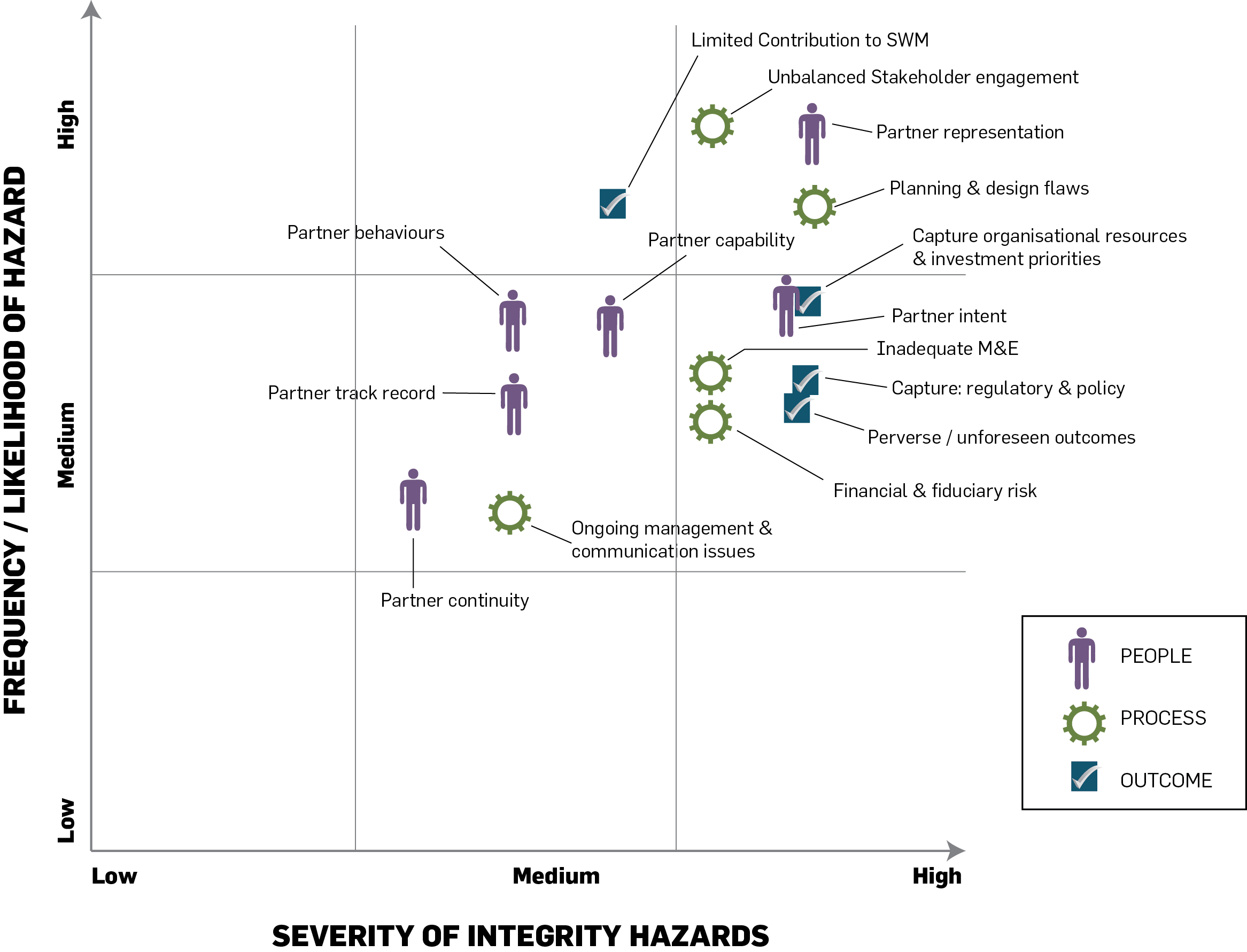Fieldwork undertaken for this project has identified the range of integrity risks facing WSIs through analysis of 18 historical, ongoing, and emerging WSIs and 50 interviews with diverse stakeholders involved in them.
The integrity risks that emerged have been grouped within 15 WSI integrity risk areas, which are summarized and mapped in the figure below. Integrity risks areas with the potential to have more severely negative social, economic, environmental, or institutional impacts were assigned a higher hazard ranking than those whose negative impacts would most likely affect individual WSI participants or the internal dynamics and efficiency of a WSI.

From an integrity management perspective, it is important to ensure that the objective(s) or intent of a WSI focuses on advancing water security rather than pursuing vested interests at the cost of public interest and resources. In this context, a number of integrity risks are related to capture (of public finances, regulatory action, policy making, and access to water). Additional integrity risks can arise unintentionally via perverse outcomes where the WSI creates negative impacts for the environment, people, or institutions. Lastly if the contribution of a WSI to SWM is not properly measured, is very limited in scope and depth, is not sustainable, or comes at a high cost, then integrity is also at risk.
| Integrity Risk Area | Examples |
| capture: organizational resources and investment |
|
| capture: regulatory action, policy, and water |
|
| perverse outcomes |
|
| limited contribution to SWM |
|
Integrity risks related to participants include: the track record (i.e., reputation, past performance); representation (i.e., appropriate representation of affected stakeholders); intent and incentives (i.e., understanding motivations of participants); capability (i.e., whether participants have adequate knowledge/ resources to fulfil their role); conduct (i.e., participant behavior including compliance with agreed procedures and policies); and long-term engagement (i.e., ensuring that participants show continuity, and are committed and engaged in the initiative).
| Integrity Risk Area | |
| track record |
|
| representation |
|
| intent and incentives |
|
| capability |
|
| conduct |
|
| continuous engagement |
|
Integrity risks related to the governance and management processes of a WSI can be introduced during planning and design, stakeholder engagement, decision making and communication, financial management, and monitoring and evaluation. Getting these processes right is critical to ensuring that the WSI delivers on its objectives and serves the public interest. In the absence of robust, well-designed, and transparent processes for planning, decision making, stakeholder participation, whistle-blowing, financial management, and monitoring, WSIs are vulnerable to corrupt behaviors, capture, and manipulation toward vested interests.
| Integrity Risk Area | |
| planning and design |
|
| stakeholder engagement |
|
| managing responsibilities, decision making, and communication |
|
| financial management |
|
| monitoring, evaluation, and learning |
|

